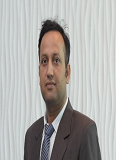

Keynote Speakers

Prof. Xiangning Lin
School of Electrical and Electronics Engineering, Huazhong University of Science and Technology, China
Research Area:
Power system and Energy Storage
Keynote Report: Multi-form Energy Storages and Their Applications in Integrated Energy Systems
Abstract:
Dr. Lin graduated from School of Electrical and Electronic Engineering of Huazhong University of Science and Technology(HUST) and majored in Electrical Engineering. Dr. Lin received his Ph.D. Degree in June 1999. Xiangning Lin is a full professor in College of Electrical and Electronic Engineering, HUST. He is a senior Member of IEEE. He has been serving as doctoral supervisor and the chair of Department of Electrical Engineering, HUST since 2007 and 2008, respectively. In 2008, he was a visiting professor of Virginia Tech. USA.
Dr. Lin has devoted himself to researches on defense of power systems in ALSTOM in UK, HUST and VT, and he has been a prominent leader for advancing academic activities and applied research in power systems that involves relay protection and automation security control, fault simulation and condition monitoring, modern intelligence technology, information technology applied in power systems, etc. Dr. Lin combines novel technologies of power generation, distribution and consumption with traditional power system protection, analysis and control. He has not only made new discoveries in electro-magnetic transient simulation in power system, but introduced modern signal processing theory and intelligent algorithm to power system protection, novel generation technology and new power grid technology, thus creating series of novel protection schemes, control principles and technologies.

Dr. Adarsh Kumar Pandey
Sunway University/Research Centre of Nano-Materials and Energy Technology
Research area: Thermal energy storage, Solar energy, Nanomaterials, Sustainable energy
Experience:
Dr. Pandey is currently working as an Associate Professor at Research Centre for Nano-Materials and Energy Technology (RCNMET), School of Engineering and Technology, Sunway University, Malaysia. He is leading the PhD in Sustainability Science and Technology program at Sunway University. Prior to this he worked at University of Malaya Power Energy Dedicated Advanced Centre (UMPEDAC), University of Malaya, Malaysia. He did his PhD in Energy from SMVD University, India. He has published more than 103 research papers as per Scopus data base as well filed 5 patents on different solar energy technologies. Besides, he is author of book, reviewer of many journals and Editorial board member of International journals. Till date he has more than 2950 citations with h-index of 27 as per google scholar data base. He is listed in top 2% Scientist in the world by Stanford University. Till now he has secured and managed more than 1.5 million Ringgits of research grants as PI/CO-PI. Dr. Pandey delivered more than 25 keynote/invited lectures in International conferences/Workshops and Seminars. His current area of research involves but not limited to Sustainable Energy Technologies, Phase Change Materials as Thermal Energy storage, Nano Dispersed Phase change materials (NDPCMs), Solar PV and PVT, Dye sensitized solar cells etc.

Prof. Xiaoming Zhang
School of Marials Sience and Egineering, Hebei Uiversity of Tchnology, China
Speech Title:
Material realization of topological semimetals without and with spin-polarization
Abstract:
Topological electronic materials have become the research focus in condensed matter physics and materials science since the discovery of topological insulators. Recently, more types of topological materials have been proposed such as Weyl semimetals, Dirac semimetals, line-node semimetals, ans so on. Curently, these topological electronic materials have been well studied in non-magnetic materials. In recent years, the rapporteur team has devoted itself to explore topological electronic materials, especially spin-polarized ones, and develop their physical properties. Their reaearch involves various types of topological materials, including topological nodal point (semi-) metal, topological nodal line (semi-) metal, topological nodal suface (semi) metal, etc. Especially,. magnetic topological materials integrate spin polarization and non-trivial topological electronic states; thus undoubtedly have broad application prospects in future spintronics devices. This report will also introduce the physical properties and material development of various magnetic topological states.
